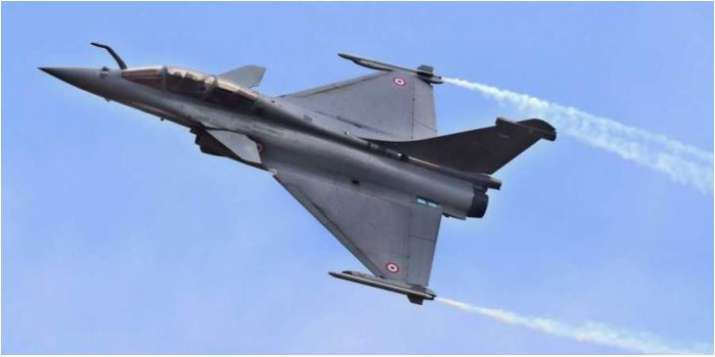SOURCE: PTI

Soon to be inducted into the Indian Air Force, the 36 Rafale jets will not be sufficient to take care of the force’s requirements, IAF chief RKS Bhadauria said on Friday, highlighting the need to focus on developing indigenous platforms across the spectrum to have an edge. Speaking at a seminar on ‘air power in no war no peace scenario’ that was organised by the Centre for Air Power Studies, Bhadauria said the use of the Air Force in the sub-conventional domain was considered a “taboo” in the past and the Balakot air strike was a “paradigm shift” in that.
Stressing on the need to develop indigenous weapons, Bhadauria said it would be a “game changer” if in the next air skirmish, the weapons and missiles used by the Air Force are indigenously built.
“The 36 Rafale jets will alone not provide us solution for the IAF’s need. We need to be able to use the indigenous Astra missile on the Su30s and across other fighter aircraft like the MiG-29 for better performance of air power,” he said.
He, however, said the induction of the 36 Rafale jets that are armed with Meteor missiles will boost India’s air capabilities.
“But there needs to be more solutions. We cannot just depend on Meteor class in the Rafale jets to sort out IAF’s requirements. It’s important that this capability on Rafale is complimented with similar capabilities on other platforms and we have taken lot of action towards that,” he said.
The air chief also said that while India had an edge over Pakistan in terms of Beyond Visual Range Missile capability at the time of Kargil, “we allowed that to slip”.
“We had an edge over Pakistan Air Force in terms of Beyond Visual Range Missile capability at the time of Kargil. We allowed that to slip and thereafter it took a decade and half in our struggle to acquisition process to be able to get better capability,” the Air Force chief said in his speech.
This would soon materialise with the induction of the Rafale jets, he said.
“In air engagement, especially in a deeply contested area, it is important to have a weapon’s edge. Once we retain this edge, it is important that we don’t allow to slip back this edge,” he added.
Hailing the government’s decision to carry out the Balakot strikes, Bhadauria said it was a “tough and bold decision to strike at the heart of terrorist training camps deep inside Pakistan across the Line of Control”.
“IAF successfully struck the target chosen. Pakistan Air Force responded 30 hours later with a large package of aircraft under Operation Swift Retort.
IAF ensured they weren’t able to hit targets. They were in a hurry to disengage.They were doing it for their domestic audience,” he said.
He said that IAF’s successful strike proved how air capability can be used for non-conventional warfare as well.
“When undertaking such targets, we need the moral high ground. The target chosen was on a hill to minimise collateral damage. They could otherwise have doubled the aircraft or taken other measures,” he said.
A fleet of Indian Air Force aircraft bombed a terrorist training camp in Balakot inside Pakistan on February 26 last year to avenge the killing of 40
Central Reserve Police Force (CRPF) personnel in the Pulwama terror attack on February 14.
On September 29, 2016, the Army carried out surgical strikes on a number of terror launch pads across the Line of Control (LoC) in retaliation to an attack on its base in Uri that month.
from Indian Defence Research Wing https://ift.tt/2wdMhPV
via IFTTThttp://idrw.org
No comments:
Post a Comment